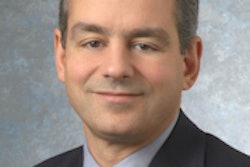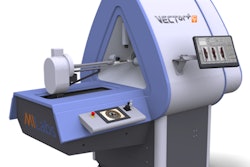Radiology, nuclear medicine, and neuroradiology organizations are anxiously awaiting a decision from the U.S. Centers for Medicare and Medicaid Services (CMS) that would finalize its proposal to limit FDG-PET coverage to one nationally covered scan.
The new proposal would also refrain from establishing a nationwide CMS policy for coverage of additional FDG-PET scans to guide management plans for cancer patients, instead leaving decisions to local Medicare Administrative Contractors (MACs).
Finally, CMS is also expected as soon as next month to rule on whether to continue the requirement for PET facilities to file patient-related data with the National Oncologic PET Registry (NOPR).
Limiting PET scans
The history of the proposal dates back to 2006, when CMS proposed the establishment of NOPR to collect data on FDG-PET's utility prior to making a decision on expanding reimbursement. Under the policy, Medicare would pay for FDG-PET scans as long as they were reported to the NOPR database.
In March, CMS proposed revising the policy, but rather than give a blanket nod to expanded reimbursement, as PET advocates had hoped, the agency proposed more limited coverage. Public comment was accepted until April 12.
The biggest concern among medical imaging groups -- including the American College of Radiology, the American College of Nuclear Medicine, the Society of Nuclear Medicine and Molecular Imaging, the World Molecular Imaging Society (WMIS), and the American Society of Neuroradiology -- is its potential to limit the use of FDG-PET scans.
The lack of a national coverage policy might make physicians less willing to order follow-up FDG-PET scans. WMIS and other organizations contend that without the studies, physicians will have no way of knowing whether a patient's treatment plan is successful.
"There are some diseases more than others that you absolutely must have multiple scans during the treatment phase," said Kim Pierce, WMIS executive director. "You don't know if you have to maintain treatment, stop treatment, or change treatment."
NOPR has also expressed its opposition to the FDG-PET scan limitation. In its letter to the agency, NOPR executives asserted that the proposal "would restrict current coverage for many oncologic indications and be at odds with clinical practice and treatment."
End of NOPR?
Over the past seven years, NOPR has collected clinical data from imaging facilities throughout the U.S. to evaluate the effect of PET on patient care management, including how FDG-PET results may have changed initial or ongoing treatment plans.
Between May 2006 and April 2009, NOPR collected data from approximately 133,000 PET scans from some 1,900 PET facilities.
While WMIS and other organizations agree it is time to end NOPR, Pierce applauded the group for a job well done.
"It was definitely the right thing to do," she said. "There is no question that it was successful. No one knew going into this how it would turn out, and [NOPR] turned out to be a very positive thing for CMS and the molecular imaging community."
The tasks for FDG-PET facilities and NOPR itself were not easy. The requirement to file PET-related information with NOPR was a huge burden for imaging centers, Pierce noted, and she was quick to commend the work by NOPR chair Dr. Bruce Hillner, co-chair Dr. Barry Siegel, and previous co-chair the late Dr. Edward Coleman, who directed the accumulation and organization of massive amounts of data.
Among the findings by NOPR is the effect FDG-PET can have on a patient's treatment regimen. In its letter to CMS, NOPR cited its own 2009 study, which found that patient treatment management changed in 38% of 7,977 patients after one FDG-PET scan.
The rate of change decreased slightly to 35% of 2,902 patients after a second scan, 31% of 1,004 patients after a third exam, and 29% of 542 patients after a fourth scan.
While the number of patients receiving multiple scans decreased, NOPR concluded that the influence of FDG-PET on changes in patient management "remains substantial across multiple scans performed over time."
| Change in patient management based on number of scans | ||||
| Management plan | Scan 1 | Scan 2 | Scan 3 | Scan 4 |
| Continue treatment | 10,816 (46%) | 2,669 (43%) | 1,139 (45%) | 542 (46%) |
| Modify dose | 1,411 (6%) | 410 (6%) | 150 (6%) | 67 (6%) |
| Switch or add drugs | 5,769 (25%) | 1,845 (29%) | 753 (30%) | 354 (30%) |
| Stop and observe | 4,061 (17%) | 1,058 (17%) | 376 (15%) | 164 (14%) |
| Image or biopsy | 1,318 (6%) | 274 (4%) | 95 (4%) | 39 (3%) |
In the case of patients with Hodgkin's lymphoma, NOPR discussed how FDG-PET is used more than once to assess the results of chemotherapy and other treatment. FDG-PET is used to determine how well a patient is responding to initial treatment, and again to restage patients who develop recurrent disease to see how the next phase of therapy is progressing.
FDG-PET overuse
Pierce said that WMIS recognizes CMS' concerns regarding the potential overuse of FDG-PET.
"I think [CMS'] strongest concern is that [FDG-PET] will go the way of CT and MRI and that it will become overused," she said. "But making [the coverage] a one-scan limitation will have a significant effect for the patient and the treating physicians."
WMIS and the other organizations are also concerned about the role local MACs may play if reimbursement is restricted to one FDG-PET exam.
In its letter to CMS, the organizations asserted that thousands of beneficiaries "will be forced to make the choice of either foregoing treatment or agreeing to pay out of pocket for the scan."
They also contend that PET facilities may feel compelled to require their patients to complete an Advance Beneficiary Notice (ABN) for medically necessary scans beyond the proposed one-scan national coverage limit. In response, Medicare beneficiaries may decline to sign the ABN and not receive a FDG-PET scan.
CMS could render a decision on the proposals as soon as June.
"In the end, it is all about the patient, not us," Pierce said. "The reality is we need to do what is right for the patient, and so does CMS. If everyone considers what is best for the patient -- not the most expensive thing -- I am hopeful that [CMS] will decide to change their mind about the one-scan limit regarding subsequent scans."



















